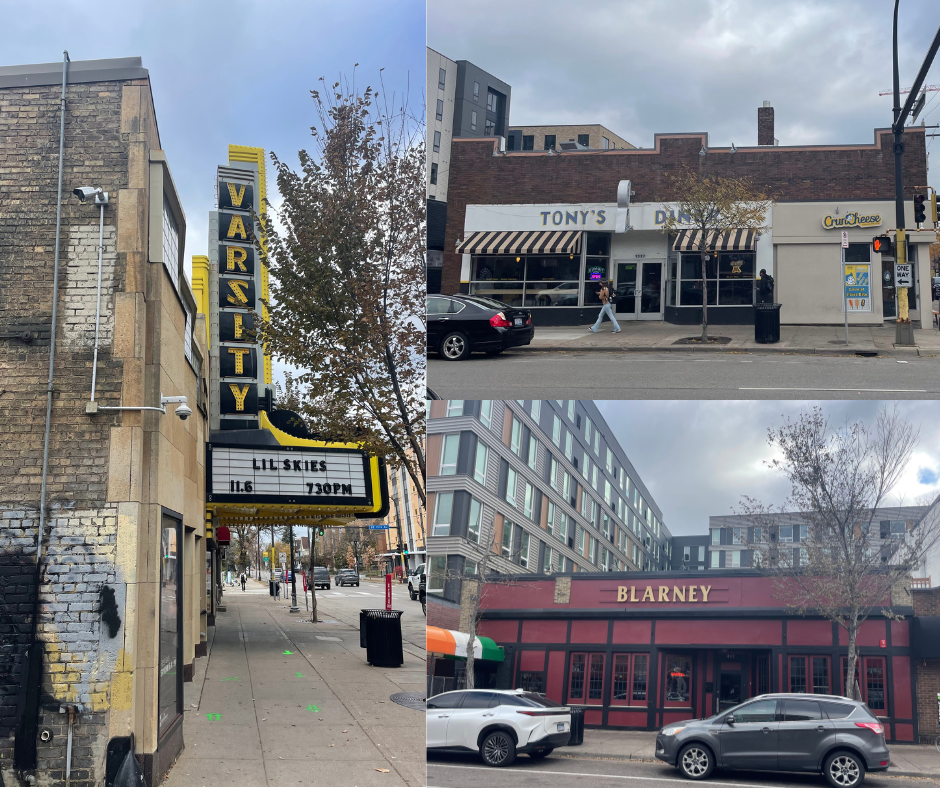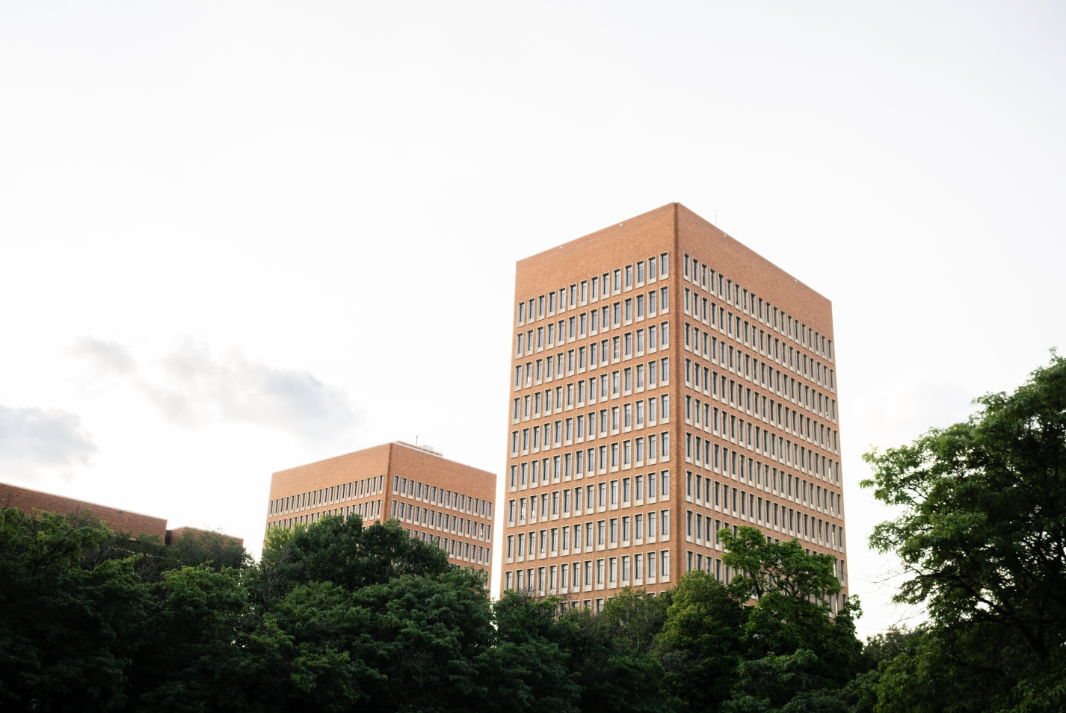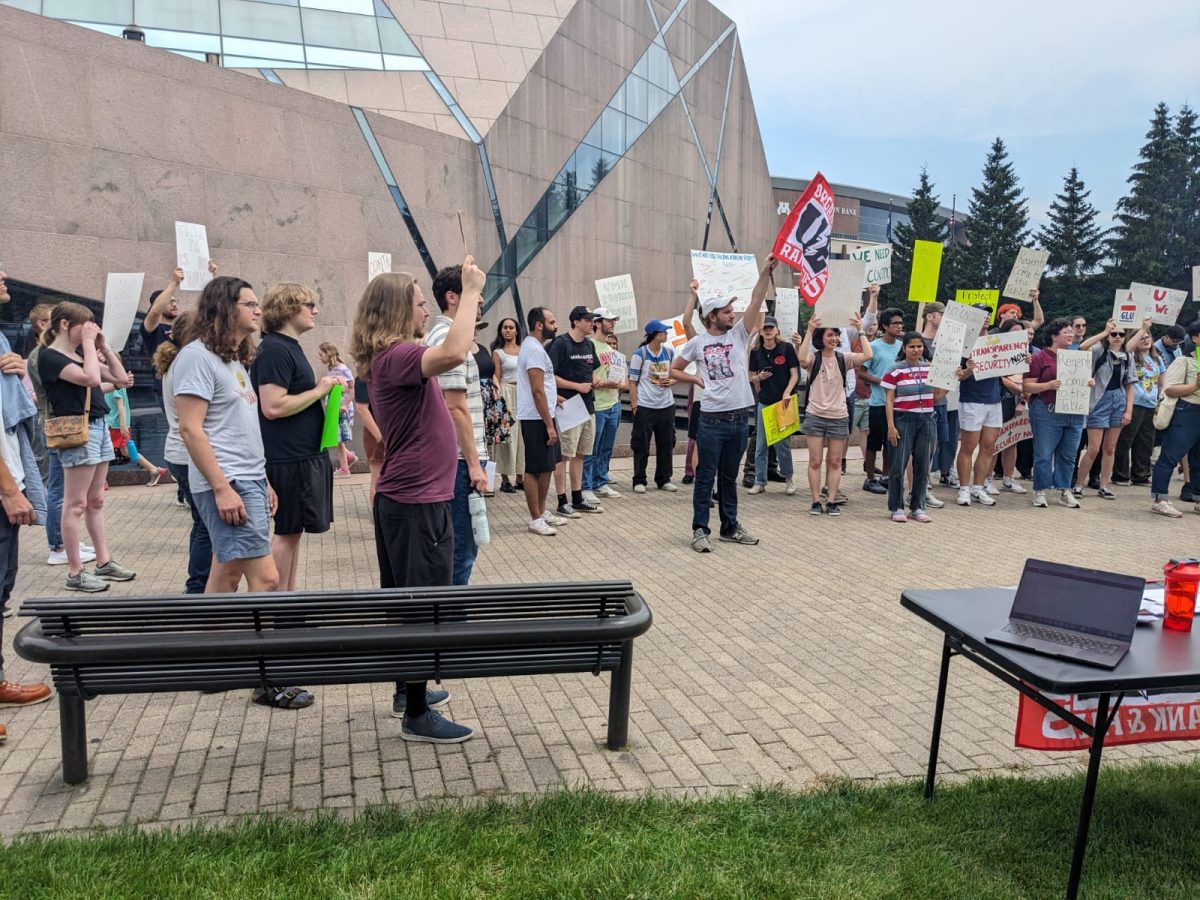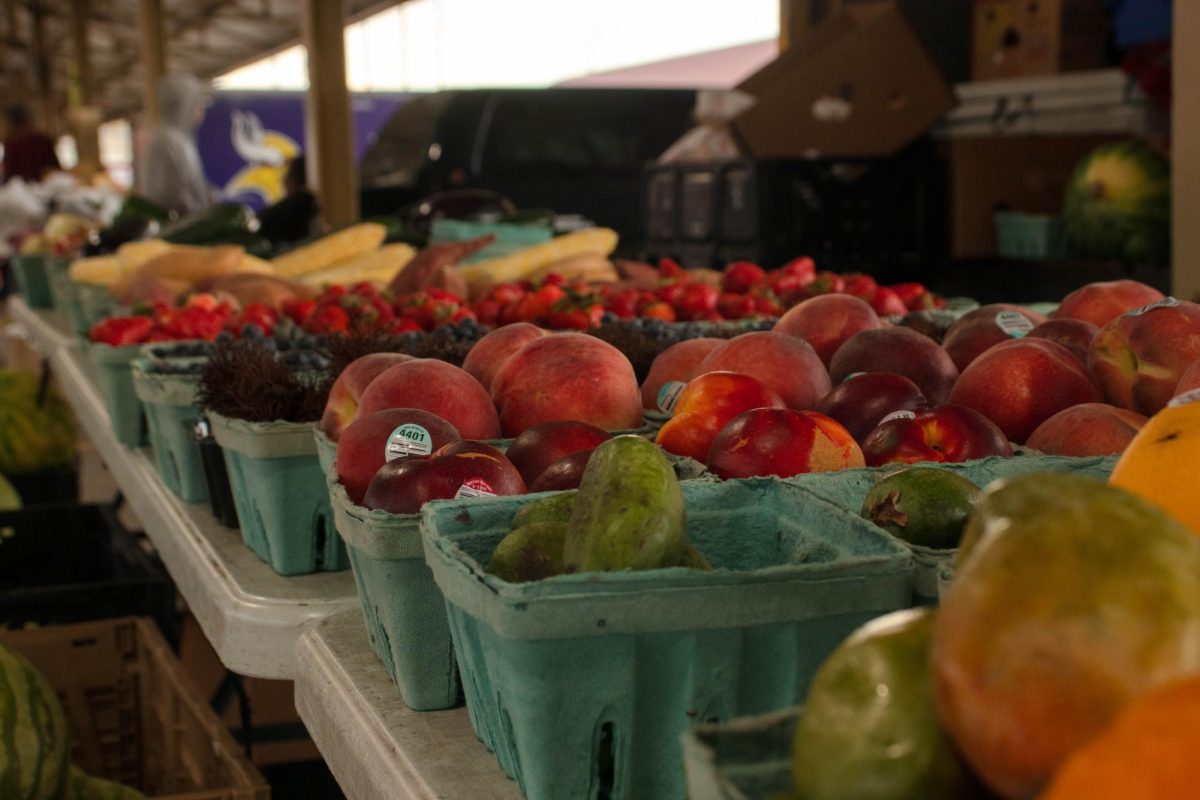The Community Planning and Economic Development (CPED) department held a community engagement meeting on Thursday evening at the Arvonne Fraser Library in Dinkytown to discuss the draft guidelines for the Dinkytown Commercial Historic District.
Minneapolis city planners Robert Skalecki and Erin Que led the meeting, presented the draft design guidelines and answered questions from community members.
Minneapolis City Council approved the Dinkytown Commercial Historic District designation in 2015. Revolving around the intersection of Fourth Street SE and 14th Street SE, the district includes 35 properties constructed from 1899 to 1929 — the period of importance as outlined in the draft.
However, the city council-approved period of importance is only a portion of the original period proposed in 2015, which extended to 1972.
While drafting the guidelines for the Commercial Historic District, Skalecki, Que and their team could solely base their work on the city council-approved period of importance. As a result, the current draft of the guidelines excludes buildings constructed or significantly altered after 1929 from contributing status to the district.
Three such buildings are Blarney Pub & Grill, the Varsity Theater and the one-story brick building housing CrunCheese and Tony’s Diner.
Kristen Eide-Tollefson, a co-founder of Preserve Historic Dinkytown involved in the 2015 proposal, said she was surprised to see the exclusion of buildings initially accommodated in 2015.
“The proposal was to change literally a third of the buildings from contributing to non-contributing to the historic district and including the Varsity, which has been proposed as a landmark for decades by the city,” Eide-Tollefson said. “That kind of tells you how this has gotten a little off base.”
Skalecki said in the community engagement meeting a building with non-contributing status does not exclude it from historical preservation protections.
“A non-contributing resource does not mean that the property is being ‘de-designated,’” Skalecki said. “It still has the same preservation protections. It’s just that it’s evaluated somewhat differently.”
Community members like Eide-Tollefson remain concerned with the current draft guidelines. She said the draft allows for more high-density developments — like student housing complexes — which could impede the economic integrity of Dinkytown.
“Whenever a new development goes in, the rent goes through the roof, and you can’t sustain and provide the kind of business incubator and opportunities for new business,” Eide-Tollefson said.
Some Dinkytown property owners, like Steve Young, have opposing concerns. Young is the managing member of the real estate firm Arbor Commercial Group, L.L.C., which owns property in Dinkytown built in 1984. The property is included in the Commercial Historic District design under non-contributing status. Young said, despite not being a historical building, he is still required to comply with historical preservation standards to modify his property.
“Even though my building is not a contributing building, I still have to go through the Historic Preservation Commission to touch it in any way,” Young said. “So, it adds a layer of cost to small businesses that come into my building that they wouldn’t incur if they were one building outside of the historic district.”
Community members are not the only group involved in efforts to preserve historic Dinkytown. The University of Minnesota established 325 14th Avenue SE LLC to purchase the property, which was formerly home to Gray’s Campus Drug.
Leslie Krueger, assistant vice president for planning, space and real estate for the University and point person for the Gray’s property purchase, said the University hopes to protect Dinkytown as a valuable part of student life.
“We want a place that people feel excited to go, and where students can take their parents when they come to visit, when we’re a place that they can go to go on a first date, a place that faculty or staff can go out for lunch,” Krueger said. “We really wanted to make sure that we were supporting the preservation of that historically charming neighborhood commercial area.”
The guidelines for the Dinkytown Commercial Historic District are not final. At the end of the community engagement meeting, Skalecki said he and the rest of the CPED team hope for another, similar meeting to hear and discuss community feedback before the guidelines are made official.
“We’d be interested to hear what community members might want to see change and what we can do with that,” Skalecki said.






























Kevin S
Dec 15, 2023 at 8:41 pm
Just because your newer architecturally insignificant building was constructed prior to community attention doesn’t mean that it did not contribute to the degradation of a historic neighborhood. Nor does it mean that you can further ruin the Dinkytown’s charm for future generations. Poor city planning aside, you are a tenant in a historic district Steve.
SHELLEY BRYANT
Nov 7, 2023 at 2:11 pm
I agree with both Steve and Roger. Dinkytown was ruined years ago.
They might as well put in more awful, boxy apartments and then have the new undergraduate population complain that they don’t have any place to shop, go out for a quick dinner or have someplace to grab a beer close by.
Steve Mayer
Nov 7, 2023 at 12:40 pm
Sorry you’re at least 20 years too late.
Roger Williamson
Nov 7, 2023 at 11:53 am
As a one time business owner in Dinkytown, from 1992 through 2013, and a local resident I think the damage to the district has already been done. The once bohemian atmospher of the area has already been destroyed.
Reid Brown
Nov 7, 2023 at 11:37 am
Could somebody help me understand why in a housing crisis we are making it harder to build student housing? The UMN undergraduate population is just above 39,000 and growing yearly. Where do people recommend these students live if not these student focused rentals? I would think constructing more student housing in Dinkytown is a no-brainier. The footprint of these buildings is frankly very marginal compared to the number of homes they provide (for students).
UMN students are a large and transient community, it makes complete sense to provide them housing in a dense area where they are close to shops (so they can spend their (or their parent’s)) money and be close to campus. I get that rents are high, but I feel like constraining housing supply is unlikely to make anyone’s rent cheaper.
Como (nearby) is seeing more and more students encroach in the neighborhood. Historically it has not been as student dominated as it is now. You can follow up with longtime residents and SECIA volunteers if you do not believe me.
I am also frustrated by the increasing corporatization of Dinkytown businesses, however, I feel like the increased foot traffic associated with more student housing will be of support to any business there (corporate or local). Strong housing supply (public, private, and cooperative) in addition to strong renter protections seems like a more productive form of alleviating the housing crisis compared to people like Preserve Dinkytown going out of their way to block much needed housing stock increases in the area.
Ardes Johnson
Nov 7, 2023 at 10:55 am
Really good photos and writing re: Historic Dinkytown meeting.
Thank you Grace You managed to sort out key info in a very complicated history and current proposals from the city.